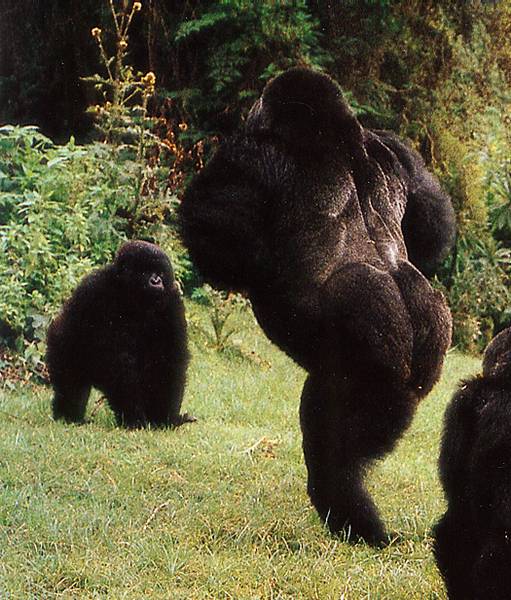How do gorillas communicate?
Because gorillas live in dense rain forest where group members often cannot see each other they use mainly vocalisations for communication. In accordance with their role as group leader, silverback males are the ones to vocalise most frequently.
For newly born gorillas, vocalisations (whimpering, crying, screaming) are the most important means of attracting their mother's attention to their needs. As soon as the baby starts to move away from its mother, it starts to use grunting vocalisations. These sounds, generally classified as 'grunts' and 'barks' and their many variations, are the gorillas' most important vocalisations. They indicate the whereabouts of individual group members and can accompany social interactions. On average, adults make eight such vocalisations per hour, most often during travelling. Group members probably recognise each other from these sounds.
However, body postures and facial expressions also indicate the gorillas' mood. Certain behaviour patterns involve certain body postures and often require another animal to do something. Postures signalling mood or intention to the partner are sometimes even used for communication over greater distances; this is particularly true for display behaviour.
Overall, the gorillas' senses resemble those of humans. They use all senses in their communication with conspecifics - not only hearing and seeing, but also touching and smelling. Silverback males have a characteristic smell. In a dangerous situation, they additionally emit a very specific scent which can be smelled at many metres and which alarms the group without any noise.

